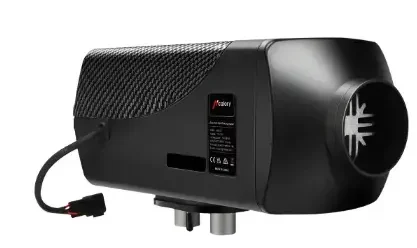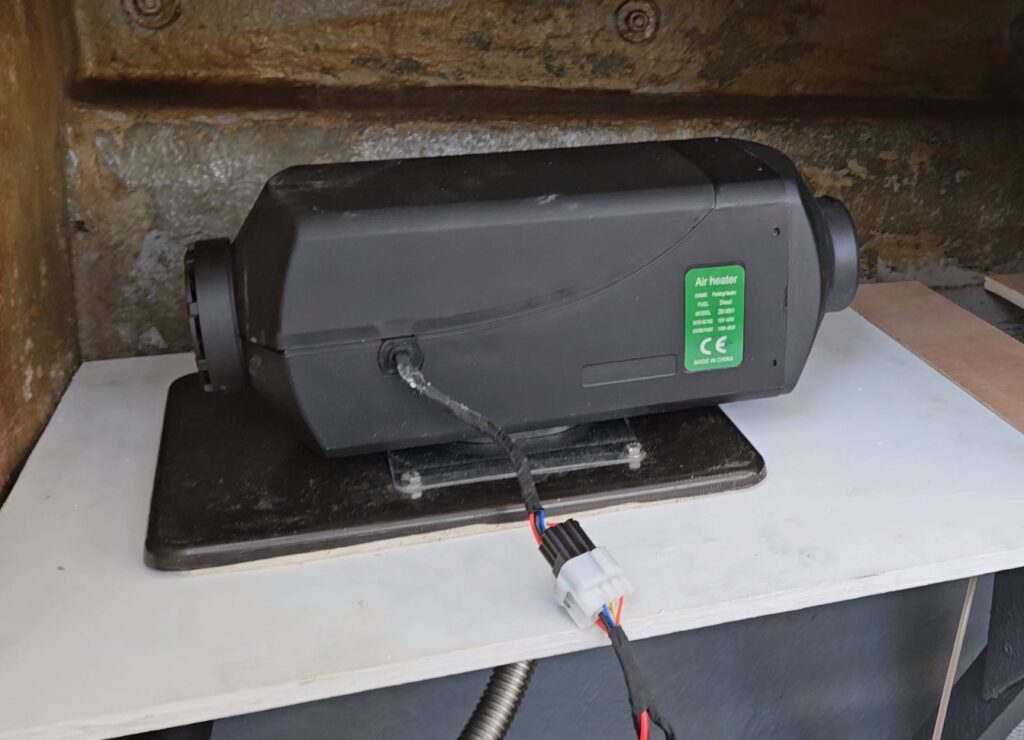Diesel Heater Safety
Diesel heaters have been about for a long time now, either installed professionally in heavy goods vehicle cabs or in boats by engineers accredited by the supplier. The three main manufacturers being: Eberspacher, Webasto and Planar.
These diesel heaters have a good track record, and this is probably in part to the professional installation.
How a diesel heater works:
Basically, the fuel source diesel, is introduced into the combustion chamber mixed with air from the inlet hose and ignited to heat the heat exchanger, which in turn heats the air from the cab or boat accommodation that is blown across the heat exchanger and back into the cab or accommodation by means of a 12-volt fan. The exhaust gasses are routed back outside via the exhaust pipe.
What could go wrong?
In an ideal installation the heater unit would be sited inside the vehicle or campervan with the inlet and outlet pipes passing through the floor or bulkhead leaving the fuel, air and exhaust fittings external to the cab or accommodation. Unfortunately, when fitting these units in a cab, campervan or boat the units are often sited in more convenient locations which means running the exhaust, fuel and air supply hoses and pipes through the accommodation.
Issue 1: If the exhaust fitting leaks the exhaust gasses will infiltrate the accommodation and could cause carbon monoxide poisoning and even death.
Issue 2: If the air intake hose for the combustion air is located in a bilge or engine room where petrol or flammable materials that give off vapour are stored, then adding a flammable vapour to the combustion air could cause an explosion or fire within the unit.
Issue 3: The exhaust pipe gets extremely hot and if it comes into contact with any of the materials mentioned in the issue 2 scenario, it will also cause fire or explosion. Also, if it is situated too close to wooden of fibreglass bulkheads the heat transference can also cause a fire to start.
Issue 4: The intake air to be passed over the heat exchanger should be from a clean environment, ideally from the same space the air being heated is discharged to. Otherwise, if this air comes from engine spaces or storage compartments, there is a chance of contaminated air being pumped into the accommodation. This includes air from compartments that house the batteries as these areas can also contain poisonous hydrogen fumes which can be caused by the batteries overcharging.
All of the above issues are usually avoided when being installed professionally. The safety issues now arise due to professionally installed heaters being removed and advertised for sale on the second-hand market through eBay, car boot sales and boat jumbles. These are then being installed by the avid DIYers who are not necessarily aware of the potential hazards of the home install. Also the availability of an influx of cheap imported diesel heaters usually from China which have flooded the market and are available for a fraction of the price of the branded heaters previously mentioned.
Are the imported heaters safe?
Obviously for these units to be sold at a fraction of the cost of the branded units we can probably assume that the materials used to manufacture them is of an inferior quality to the branded units and that the safety features such as thermal cut off devices may not have been as rigorously tested.
The branded units have to comply with strict EC safety directives, whereas the imported units normally only comply with a lesser local standard. The heater that I bought although imported does have a CE mark and I have contacted the manufacturer and asked them to send me supporting documentation to corroborate this as there are a lot of falsely CE marked products that come form China and other less scrupulous countries.
I will let you know the response I get, if I do indeed get a response at all.
To comply with these safety standards the branded models have to be fitted with overheat cut off devices and are made to withstand a prolonged exposure to heat.
Whereas the imported models may not have had their safety features as rigorously tested as the branded units. On that note I did see a recent article where a Chinese firm “Hetian had gained ISO/CE and SGS certification)” So it shouldn’t be a blanket rule that if it is a Chinese import, it isn’t safe.
Trading Standards
There have been cases where the Chinese imported heaters have been stopped at customs and checked for conformity to be sold in the UK. It seems from the government reports that although these heaters were taken away and tested, they were only disallowed due to the instructions not stating clearly enough the hazards that may arise from a poor installation. (See the trading standard report here).
In conclusion
The Chinese imported heaters, unless backed up by some corresponding documentation are probably not going to be as safe as the branded models. However, they are approximately 10% of the cost of a branded model.
It seems that most of the safety issues regarding these heaters stem from the fact that they are not being professionally installed. This being the case, I would have thought that purchasing an imported model and installing it yourself if you have the aptitude for such projects and following the recommended safety advice laid out in this post, would provide you with a cheap relatively safe heating option for your vessel.
If you are going to go down the route of an imported heater, then check out my other post on Chinese Diesel Heater Installation. Also check out my recourses link to where to source all the parts required for the installation.


Pingback: Diesel Heater Boat Installation - BoatStuff.info